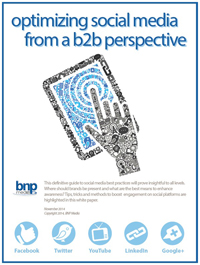Enterprise-level access control projects are just like any other access installation only larger, right? Wrong. Playing on the enterprise field requires a whole new level of skills, training, planning and follow-through to be profitable. The stakes are higher, not only for the integrator, but for the end user as well.
“The very first piece of advice I would give to anyone looking at enterprise projects is to do a self-analysis of your company and your capabilities,” says Larry Simmons, vice president of client services, Tech Systems Inc., Duluth, Ga. “Look at the project you are getting ready to take on and make sure you have the staff to properly install the system. If you don’t have the credentials or the staff, it is a lot more painful than if you mess up a 10-card system. It can cost a client millions. It is a different arena here, so make sure you are prepared to do the job.”
The planning process is where margins are won and lost, and the bigger the job, the more there is at stake. Economies of scale don’t necessarily apply.
“Some companies think that the more they are doing for a client, the less it costs on a per-point basis,” says Steven Corey, executive vice president, ACME Security, San Leandro, Calif. “We have found it actually costs more from the documentation, training and planning side. The bigger the job, the more time it takes to attend meetings and all those other parameters.”
Successful enterprise-level integrators almost universally agree: Training, standardizing, planning and following through are the keys to ensuring a profit on every enterprise access control project.
Prep Work
Before even bidding or approaching an enterprise-level job, integrators who do this regularly recommend getting your “internal ducks” in a row. That means training staff not only on the product or products you sell and install, but also on developing processes and standards for how all work should be approached.
Training is the cornerstone to a successful job, emphasizes Rett Hicks, executive vice president, Tri-Signal Integration Inc., Sylmar, Calif. “We know that our success is tied directly to our customer’s satisfaction. Our people are highly trained and experienced, but technology changes all the time. Training is critical to our profitability; but it also needs to be as efficient as possible and designed to minimize the amount of time away from projects and customer support.”
Enterprise projects often require a different skill set, Simmons adds. “As you start to deal with enterprise clients, people involved in the project may need different qualifications such as Microsoft or Cisco certifications. In general, the more certified people you have, the more you can talk to the higher-up-the-chain people in the IT group.”
Beyond a well-trained staff, standardization is probably the single biggest key to success, says Alan Kruglak, senior vice president, principal, Genesis Security, Germantown, Md. “The best way to make money is to follow your standards so there are no hidden surprises. You have to make sure everything is done both properly and profitably. All of our systems — even the way software is programmed — in most applications look alike. We don’t want to recreate the wheel. We know our standard cost categories and the standard materials we use. And when a consultant specifies Y device to power something and our standard is X, we stick to X because we know how that works and the exact time and labor it involves. Our main goal is to make everything a repeatable process.”
Standards should also apply to the client side, explains Pierre Trapanese, CEO, Northland Control Systems Inc., Freemont Calif. “Our bottom line is tied to a good working partnership with the client, determining their standards and making sure those are in place before we even start working.”
These standards include how a client will apply access control across their enterprise, whether across the city, state, country or world. When projects are done location by location they often don’t match up. “As an integrator, we want to manage those and make sure what is put in Phoenix and Paris are compatible,” Trapanese says. “It saves us a lot of time, frustration and money and saves the customer the same thing.”
Designing the Job
With a good business foundation, the next step is the one that will make or break the bank. Estimating, preparing and designing the job will determine not only the profitability, but also customer satisfaction, which is the ultimate goal of any job.
“Every successful installation requires a very thorough planning process with all the key stakeholders, including the customer and the product manufacturers,” says Dave Charles, vice president, business development, Lenel, Rochester, N.Y. “The planning process with all parties is critical for a cost-effective and gainful project. Without these, cost over-runs are bound to happen, which will leave the integrator with shrinking margins and an unsatisfied and disgruntled customer. An unhappy customer is more inclined to seek other delivery and support means for future projects. And in today’s economic environment, a lost customer prevents future revenue opportunities.”
Sean Leonard, portfolio marketing director, Ingersoll Rand, Carmel, Ind., agrees. “One of the biggest mistakes an integrator can make is not asking the customer enough questions,” he cautions. “Often an end user will try to design the system for you and if you don’t do a good job of asking the end user what problem they are trying to solve, you can end up defining a solution that is not ideal for what the customer actually needs.”
Walter Helms, vice president and CTO, Matrix Systems Inc., Miamisburg, Ohio, adds: “One of the most common pitfalls is not fully understanding the customers’ expectations. There is no substitute for an in-depth discovery meeting to clarify how the requirements will be met and where limitations may be encountered. One of the most expensive discussions that can occur during the course of a project start with the words, ‘I thought it was going to….’”
Time spent up front will save money later, Simmons believes. “Meet with the client and go through all these things. It is much better to invest money on the front end than to try to recover it on the back end. Have the courage to hold your ground and educate the client. They don’t know what they don’t know. It is our responsibility to educate them, and as an industry I don’t think we always do a good enough job of that.”
For example, one mistake integrators make is to always try to come in with the lowest bid. On an enterprise project that can guarantee a profit drain right up front.
“When a project starts with a shoestring budget it is hard to provide a quality product,” Corey says. “When you come in as the lowest bidder you don’t necessarily have the material to do the right job for the client and you can end up with a job not done correctly and a dissatisfied client.”
There are many considerations to think about when pricing an accurate proposal, says John Nemerofsky, senior vice president of sales and marketing, Niscayah, Atlanta, Ga. For example, do you need to work overtime? Are there unions involved? How many crews? Will you need to pay manufacturers overnight shipping charges to get parts on time?
“If you don’t design it right and ask the right questions, as the project manager begins to order, he may need more cable,” Nemerofsky says. “Costs will get higher. If you made design mistakes, you may need to order more from the manufacturer, which will cost you — not the customer — and may cause delay, which will in turn upset the customer.”
A good design always starts with drawings, Trapanese adds. “We are very strong believers in design engineering. We will do that even if the client doesn’t have it in the budget because it saves us so much on the installation phase. If we don’t have the drawings we will create them. It is the only way to coordinate everything. It is the foundation of a profitable project. Without the design and drawings we can expect to have problems.”
The last step before presenting the scope to the client is to review, review, review, Kruglak says.
“Double check everything,” Corey adds. “Slip a decimal point a couple of places on big-ticket items and you can sap profit before you even begin. Four eyes are better than two and six eyes are better than four.”
Installation & Implementation
Once you have the job, then the work should flow smoothly, for the most part — provided you have done the prep work and planning correctly. Having a highly skilled, trained and trustworthy installing team is a critical step, integrators say.
A good installation should be a given, Trapanese says. “We want installers that do really clean work and wouldn’t do it any other way. From our perspective, the difficulty is in the application, but if we are spending our time troubleshooting a poorly installed panel, that takes time and money away from the overall project.”
Ideally, if the planning and design phase has gone well, installation should go smoothly as well.
But as with any job, there are always things that crop up, particularly when working with contractors, who may throw the integrator’s project off schedule.
“It is very important for a project manager to communicate when things are a day or two behind because of an outside contractor,” Nemerofsky says. “A lot of integrators are frightened to ask for change orders, but this happens all the time. We have put each of our project managers through certification training. It is vital for that project manager to be able to track delays and not be afraid to ask for money due to change orders. We also use internal tools to manage the project on a weekly basis so we know as equipment comes in for that project and we are able to see how our profitability is day to day. It is how we measure how we are doing.”
Follow-Through
Almost as important as the planning and designing stage is the follow-through after the job is complete.
“Many integrators want to get an installation done and when they turn the last screw get out of there for the next year until the warranty is up,” Nemerofsky says. “In enterprise installations, when you are done is exactly when the client needs you the most for training and follow-through.
Training is an area that is both critical and tough to gauge, though. Some integrators set a limit on training.
“Typically we do the same amount of training for all of our customers,” Kruglak says. “Based on our experience, 40 hours is more than adequate and we limit the cost by putting a finite number on it.”
Other integrators take a different approach, offering unlimited training throughout the warranty period. “We don’t put a number of hours on it,” Simmons says. “A well-trained client, while we may spend more money up front, will provide a return in the future with less service issues. We strongly believe in investing the time in training the client.”
Nemerofsky agrees. “Like all clients, our enterprise customers have turnover. We always plan for training the initial group and our training is unlimited for a one-year period. We are continually educating employees over that time period. Training on the systems creates a program and efficiencies where there are less service calls and a better system and program overall.”
Turnover is an issue Corey’s company has thought a lot about, which is why they are in the process of developing a series of video training that they will provide as part of the documentation at the end of the job. Other documentation integrators typically provide at this stage include blueprints, point-to-point diagrams, training manuals and CAD drawings.
“This creates efficiency,” Nemerofsky says. “By nature, enterprise systems continue to grow and grow. In order for the plan to keep going and going, it is important that the documentation stay current.”
| Know Your Product |
|
At the enterprise level, many integrators prefer to stick to just a few, or even one well-known access control product. This really helps control the project and keep unforeseen costs and situations at bay.
“I suspect an integrator would not want to experiment with a new product at this level of deployment,” says Brad Chenoweth, vice president of sales and marketing, Infinias LLC, Carmel, Ind. “We have limited products and components that we work with,” agrees Pierre Trapanese of Northland Control Systems Inc. “We use products that are tried and true and that we know very well, and we get trained on [them]. We try to select only one new product per project to limit concern over whether it works, compatibility, etc.” Too many choices can really cause problems, he adds. “If you don’t limit your product, are you really sure you can support all those with constant upgrades and revisions to software? The problem comes in servicing and support and it will backfire.” Selling limited products has a direct positive impact on the bottom line, says Steven Corey of ACME Security. “We only sell one company. When we do that, our people can be efficient and proficient at installing it, and we can be very efficient in pricing.” It may seem counter-intuitive to offer fewer choices, but this is critical at the enterprise level. “In light of today’s fast-paced technological changes, end users have an inordinate amount of choices for applications,” says Dave Charles at Lenel. “This can place an integrator in a challenging position, especially if the end user requires a product that is new and unproven. Newer technologies can have quality issues, or feature sets that do not function as advertised and leave the integrator with unforeseen costs.” Matt Barnette, senior vice president of sales and marketing AMAG, Torrance, Calif., adds: “What I notice happens frequently in product selection is customers are wowed by one particular feature that may or may not be a distinguishing feature between products. In day-to-day use, how important will that feature really be? Usability is ultimately the most important thing.” For the integrator, a deciding factor in who to partner with is longevity. A typical installation life is 10 to 15 years. System size will often quadruple between initial installation and the end of the run, so you should pick a manufacturer that can support the system over the long haul. Sean Leonard of Ingersoll Rand, agrees. “It really comes down to the scalability of the products, the flexibility and how to minimize installation time with the products you are choosing. When you think about products, you want to pick ones that have those kinds of categories so when those challenges come up you can address them without adding a lot of burden to the overall installation cost.” Larry Simmons of Tech Systems, adds: “You wouldn’t want to buy a Volkswagen to pull a tractor-trailer. It is important to have the right equipment for the job you are doing and understand where the customer would like to go in the future — not just their immediate needs — so 12 months down the road you don’t have to change servers because you underestimated requirements.” |
| Technology = Profit? |
|
For a few integrators the type of technology they choose makes the profit.
“The way things are evolving now, leading-edge solutions are cloud-based, cost less and provide a solution that is inherently a different value set,” says Steve Pineau, CEO, Viscount, Burnaby, British Columbia, Canada. “From my point of view, if someone is asking how an integrator can maximize profit, I would first tell them to look to the future.” Bill Moran, vice president of sales, RedCloud, Reston, Va., adds: “Taking advantage of some of the newer pioneering technologies are good ways to increase profitability in an enterprise environment. Finding ways to converge data in a much more non-proprietary format that uses the end user’s IT infrastructure in a partnering environment is where you can ensure profitability. Maximize the infrastructure that is already in place.” This is precisely what Steve Leach, president, Blue Mountain Technologies, Vancouver, Canada, says is key to his company’s success. “We are profitable because we have a better system. We don’t need controllers or wiring. We run off the user network.” This may be the way of the future as technology evolves, Pineau adds. “The smart integrator in these tough economic times has to be a lot more proactive than reactive. In a tougher economic market, they have to be more creative by finding better solutions that work within the overall scope of the enterprise at a lower cost.” |








